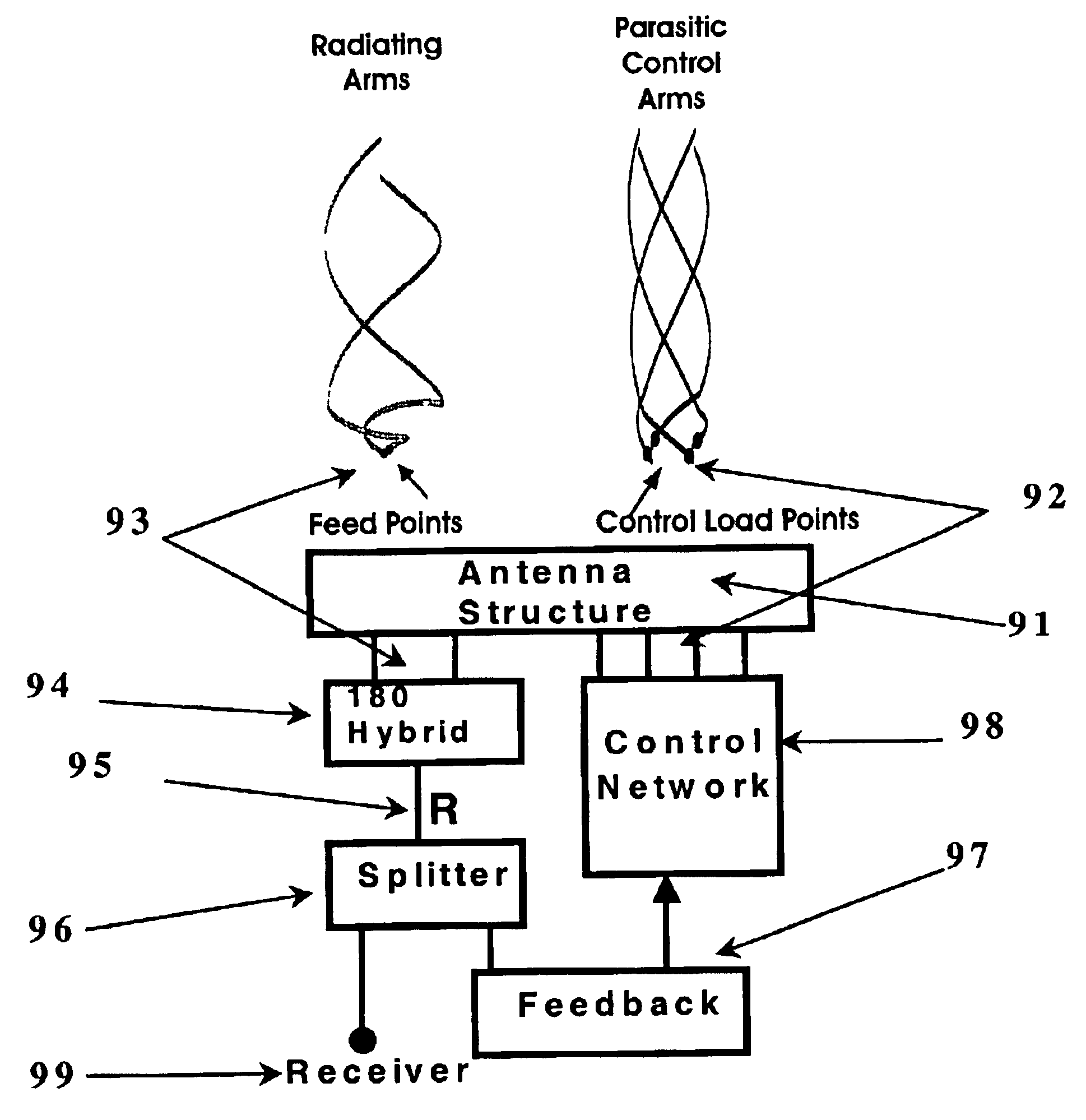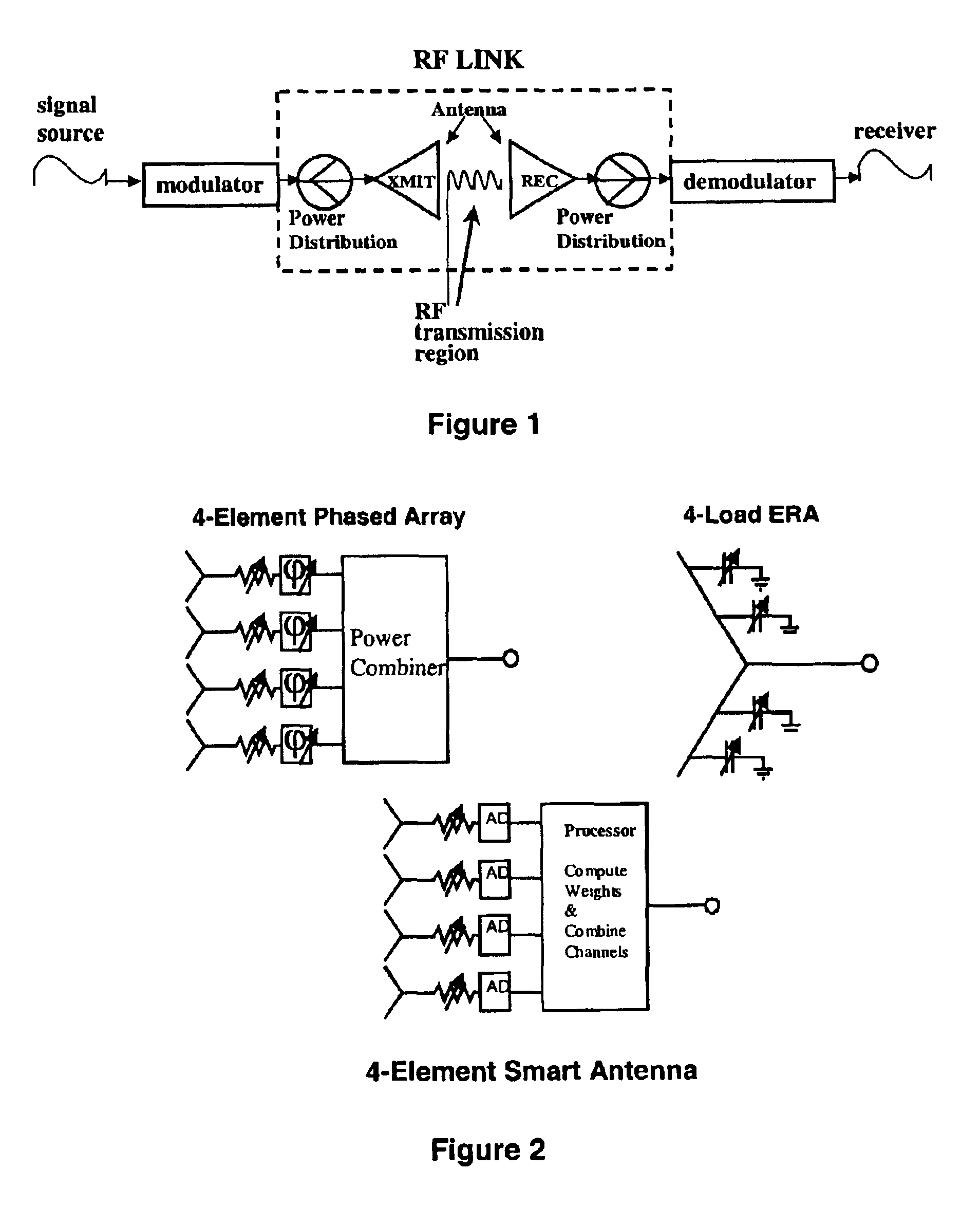Small controlled parasitic antenna system and method for controlling same to optimally improve signal quality
a parasitic antenna and small-scale technology, applied in the direction of resonant antennas, individually energised antenna arrays, non-resonant long antennas, etc., can solve the problems of affecting much more antenna multifunctionality, and achieve the effect of minimizing or maximizing some metric of the received output of the antenna, and reducing the adverse impact of interferen
- Summary
- Abstract
- Description
- Claims
- Application Information
AI Technical Summary
Benefits of technology
Problems solved by technology
Method used
Image
Examples
Embodiment Construction
As a background to the invention, the manner in which the RF properties of CPA devices can be controlled will now be described. In the context of this specification RF refers to the frequency (or range of frequencies) of a transmission which propagates through space. Also described herein is how the function of the CPA differs from conventional and other state of the art approaches to antenna pattern control and interference mitigation. An antenna is an RF device. It is important to emphasize that in a CPA system control and adaptability are applied in the antenna aperture. This is RF control. FIG. 1 is meant to illustrate what is meant by RF control.
FIG. 1 could be applied to any situation involving an RF wireless link. Such applications would include communication between separate points, broadcasting, or radar. A signal waveform is generated by some source and this is used to modulate an RF carrier and so produce a modulated RF waveform. A modulator accomplishes this. This RF wav...
PUM
 Login to View More
Login to View More Abstract
Description
Claims
Application Information
 Login to View More
Login to View More - R&D
- Intellectual Property
- Life Sciences
- Materials
- Tech Scout
- Unparalleled Data Quality
- Higher Quality Content
- 60% Fewer Hallucinations
Browse by: Latest US Patents, China's latest patents, Technical Efficacy Thesaurus, Application Domain, Technology Topic, Popular Technical Reports.
© 2025 PatSnap. All rights reserved.Legal|Privacy policy|Modern Slavery Act Transparency Statement|Sitemap|About US| Contact US: help@patsnap.com



